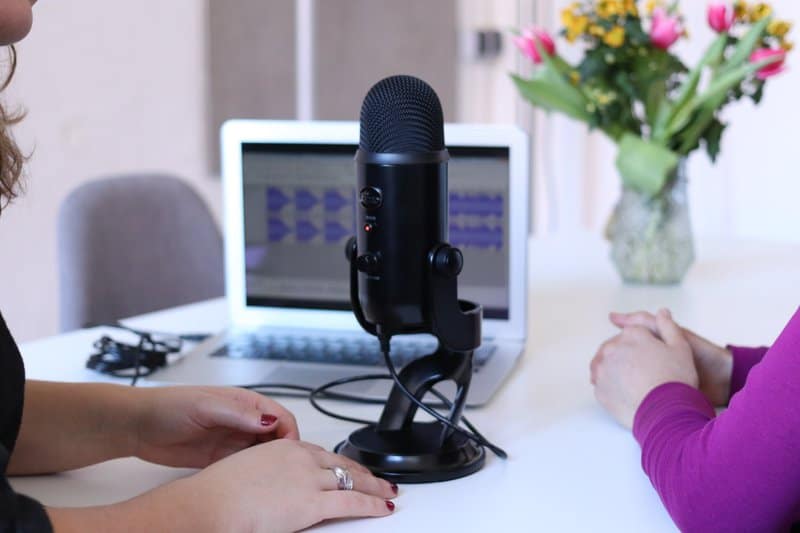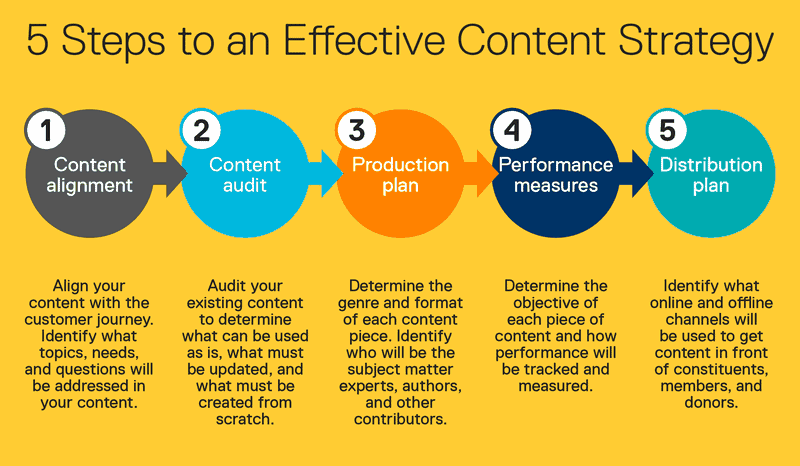While many businesses have relied on content marketing strategies for decades, some people are still at sea with what it is, and why it is a must-have for every business now. Content Marketing, when you strip away all the layers of techniques, trends, and possibilities, is a business opportunity.

As businesses struggle to achieve growth in a challenging business environment, we’re seeing more interest and budget shifting to content marketing as the best fit for companies across industries.
Content marketing has become a tool for marketers to use for growth. Businesses also use content marketing to nurture leads and enable sales by using site analytics, keyword research, and targeted strategy recommendations.
Table of Contents
The Content Marketing Institute defines content marketing as:
“...a strategic marketing approach focused on creating and distributing valuable, relevant, and consistent content to attract and retain a clearly defined audience — and, ultimately, to drive profitable customer action.”
Their definition is solid. However, it could use some clarity.
Content marketing is a long-term strategy that focuses on the development and distribution of relevant, useful, and high-quality content - blogs, newsletters, white papers, social media posts, emails, videos on a consistent basis - to build a strong relationship with current and potential customers.
When your audience thinks of your company as a partner interested in their success and a valuable source of advice and guidance, they’re more likely to choose you when it’s time to buy.
And when it’s done right, this content conveys expertise and makes it clear that a company values the people to whom it sells
Content marketing is a go-to tactic that’s proven to work. Also, it provides a competitive advantage.
There are many types of content marketing that you may choose to incorporate in your strategy. Here are some of the most common forms of it.
With over 3.6 billion global social media users, it’s easy to understand why so many businesses invest in social media marketing. There are a number of platforms to work with and several ways you can create and share content on each of them.
Infographics display content, information, and data in an easy-to-understand, graphic format. With a mix of simple wording, short statements, and clear images, infographics are a great way to effectively communicate your content. They work well if you’re trying to distill an educational and/ or complex topic down so all audience members can understand it.
Blogs are a powerful type of inbound content and allow for a lot of creativity in terms of their purpose and topic. With a blog, you can do things like promote other internal and external content and blog articles via links, add social share buttons, and incorporate product information.
A 2020 survey found that 49% of 12-to-32-year-olds in the U.S. had listened to a podcast within the last month, with an average of six listening hours a week. For this reason, many businesses and media outlets have begun creating and sharing their own podcasts.

Podcasts allow for a lot of creativity as they can be about any topic of choice. Additionally, you determine other factors related to the podcast such as cadence of episodes, who's on the podcast, where you advertise the podcast, and how long episodes are.
According to Wyzowl’s research, 69% of consumers say they prefer to learn about a brand's product or service through video. Additionally, video marketing can boost conversions, improve ROI, and help you build relationships with audience members. You may choose to share your video content on social media platforms, landing pages, or on a co-marketers website.
Paid ads can help you reach a broad audience and allow you to position yourself in all of the places you want to be seen — paid ads are especially beneficial when paired with inbound marketing. There are many places you can share paid ads including on social media, landing pages, banners, and sponsored content.
To use content marketing effectively, you’ll need to deliver the right content at each stage of the sales cycle - from awareness through consideration to purchase. Approaching content this way actually simplifies the process.
Here’s how companies use content marketing in each stage of the sales cycle to engage and sell.
At the first stage of the sales process, your content should focus on the top concerns of your audience. Writing about their pain points, challenges, and questions gives you the best chance of engaging with them. Content at the awareness stage should be educational, how-to advice.
The appropriate content for this stage includes:
In the consideration stage, content should offer a hybrid of helpful information and marketing. It should educate the reader about what features or functions to look for and how various features address their needs. Of course, your content should have a bent toward what your business offers.
The appropriate content for this stage includes:
Content marketing plays an important role when a prospect is close to purchasing. At this stage, you can focus on sales, your central message here should be your expertise, knowledge, and the differentiating benefits of what you sell.
The most appropriate content for this stage includes:
Content marketing can feel overwhelming, but it doesn’t have to be. A successful content marketing campaign should be manageable and sustainable.
Here’s a step-by-step guide for you to get started.
To create content for an audience, you need to have a clear idea of their priorities, challenges, and preferences. If you have a clear idea about your various segments, choose 1 or 2 to write for. Otherwise, craft profiles of your audience members and prospects before starting.

The right format corresponds with what stage of the sales cycle you’re creating content for.
An audience will judge your content on its quality. Identify the right resource, internal or external, to create this work.
Will you post content on your site, email it to people, or print it for an event? Start with “where” you know your audience is likely to be, and choose formats that make sense.
Once you know the target readers and the formats, create a short-term (3-6 months) plan for a realistic number of content elements you can create, based on your budget and resources. Keep track of how long it takes you to create each piece of content so that you can build that time into your schedule.
Compelling content is clearly written, without any jargon. It should also include how-to advice. A short, relevant, actionable piece of content is best.
Content marketing applications are industry-agnostic. Regardless of the target market, geography, language, or product, companies have to publicize their message and form a connection with customers.
In general, B2C is characterized by a heavier reliance on consumer-centric social media platforms, eCommerce websites, mobile-friendliness, and shorter-form assets. Sales cycles are shorter and user expectations are extremely high.
Conversely, B2B content marketers typically make greater use of LinkedIn, long-form collateral, account-based strategies, and niche audience development. Sales cycles can take months or years, and customers may have million-dollar RFPs.
An optimized content strategy might include some or all of the following:

Creating a content marketing strategy can be a daunting task. But a few tweaks here and there can help you make it a lot more efficient. Here are the steps of creating a content marketing strategy to help you drive conversions through your content.
The first part of your content marketing strategy is to set SMART goals. These should be specific to your business. They’ll likely complement your broader marketing and company goals. SMART goals have to be Specific, Measurable, Achievable, Realistic, and Time-bound.
Set Key Performance Indicators (KPIs) for your SMART goals. KPIs are quantifiable data points you can use to measure your actual performance against your goal.
Start by thinking about your target audience and buyer personas.
Answer the following questions about your target audience to help you narrow down the right types of content for them:
Then, take a look back at the various types of content to decide which types of content you’ll create in each stage.
Once you’ve decided on the type of content you’ll market with, it’s time to choose your specific content channels. Where will you share your content? Where will it live and be shared from?
Now, set your budget. Think about the type of content you’re creating and which channels you’re marketing that content on.
Then, ask yourself the following questions to determine your budget:
Make note of how your responses impact your budget. Whether that’s an increase or decrease in what you may have already estimated.
Create and distribute your content so your audience members can consume it — and possibly convert. To ensure you’re consistently producing content and sharing it among your prospects and customers, use a social media calendar or an editorial content calendar.
Lastly, analyze and measure your results so you can make any necessary changes to enhance your content marketing efforts and reach more audience members.

Look at your SMART goals and KPIs to determine the success of your content marketing strategy. Did you achieve your goals and KPIs? Were you close to reaching them, or were you off in your estimations?
Regardless of what type of marketing tactics you use, content marketing should be part of your process, not something separate. Quality content is part of all forms of marketing.
Do you need to create a website; redesign an old one; or decide the who, what, where, when, how, and why of your overall content creation plan? In all cases, having a clear and well-defined content strategy is important.
Furthermore, understanding what makes content useful and usable for your nonprofit is even more vital. That's because content creation requires a tremendous amount of time and financial resources, both of which are usually scarce for nonprofits.
Here are five steps you can take to develop a practical and powerful content strategy for your nonprofit.

With effective content marketing, you can reach your target audience and increase conversions. There are several ways to market with content to boost revenue, grow your brand awareness and recognition, and build relationships with your prospects and customers. And don't forget to extract more value from every piece of content you create.
If you are ready to get more traffic to your site with quality content published consistently and want your business to gain better rankings, RankToday is the perfect choice for you!